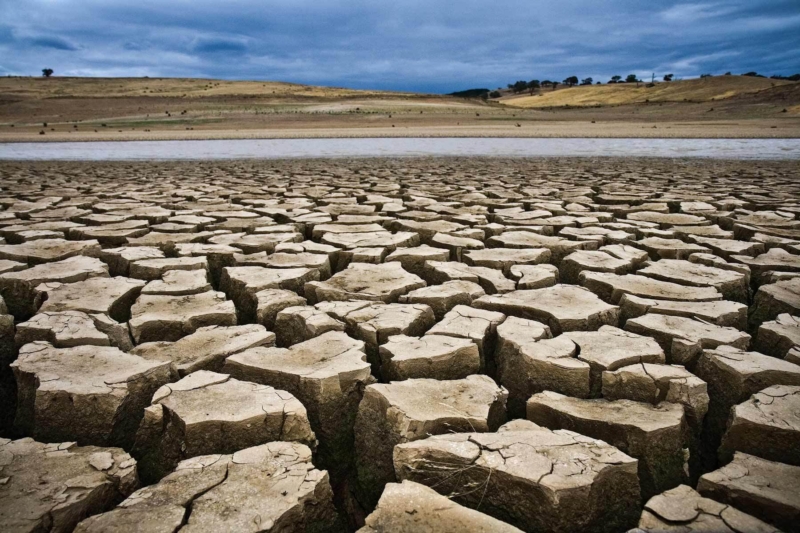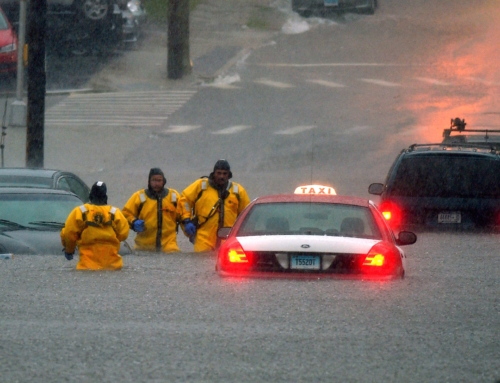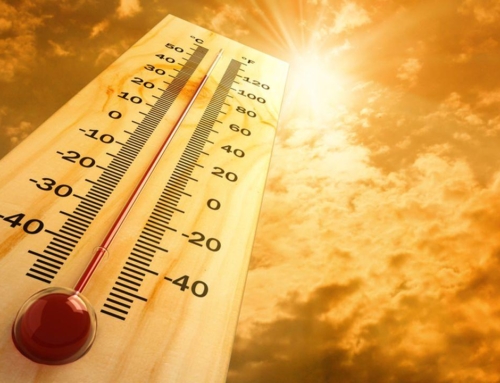Nearly every part of our country experiences periods of reduced rainfall. If we plan for drought, then we can enjoy the benefits of normal or rainy years and not get caught unprepared in dry years.
Strategies for drought preparedness focus mainly on water conservation. Make these practices a part of your daily life and help preserve this essential resource.
Indoor Water Conservation Tips Prior to a Drought
GENERAL
- Never pour water down the drain when there may be another use for it. For example, use it to water your indoor plants or garden.
- Repair dripping faucets by replacing washers. One drop per second wastes 2,700 gallons of water per year.
- Check all plumbing for leaks and have any leaks repaired by a plumber.
- Retrofit all household faucets by installing aerators with flow restrictors.
- Install an instant hot water heater on your sink.
- Insulate your water pipes to reduce heat loss and prevent them from breaking.
- Install a water-softening system only when the minerals in the water would damage your pipes. Turn the softener off while on vacation.
- Choose appliances that are more energy and water efficient.
BATHROOM
- Consider purchasing a low-volume toilet that uses less than half the water of older models. Note: In many areas, low-volume units are required by law.
- Install a toilet displacement device to cut down on the amount of water needed to flush. Place a one-gallon plastic jug of water into the tank to displace toilet flow (do not use a brick, it may dissolve and loose pieces may cause damage to the internal parts). Be sure installation does not interfere with the operating parts.
- Replace your showerhead with an ultra-low-flow version.
KITCHEN
- Start a compost pile as an alternate method of disposing of food waste or simply dispose of food in the garbage. (Kitchen sink disposals require a lot of water to operate properly).
Outdoor Water Conservation Tips Prior to a Drought
GENERAL
- Check your well pump periodically. If the automatic pump turns on and off while water is not being used, you have a leak.
- Plant native and/or drought-tolerant grasses, ground covers, shrubs, and trees. Once established, plants adapted to your local climate do not need water as frequently and usually will survive a dry period without watering. Small plants require less water to become established. Group plants together based on similar water needs.
- Install irrigation devices that are the most water efficient for each use, such as micro and drip irrigation, and soaker hoses.
- Use mulch to retain moisture in the soil. Mulch also helps control weeds that compete with landscape plants for water.
- Avoid purchasing recreational water toys that require a constant stream of water.
- Avoid installing ornamental water features (such as fountains) unless they use re-circulated water.
- Consider rainwater harvesting where practical.
- Contact your local water provider for information and assistance.
LAWN CARE
- Position sprinklers so water lands on the lawn and shrubs and not on paved areas.
- Repair sprinklers that spray a fine mist. Most misting issues result from a pressure problem, properly regulating pressure in an irrigation system will prevent misting.
- Check sprinkler systems and timing devices regularly to be sure they operate properly.
- Raise the lawn mower blade to at least three inches or to its highest level. A higher cut encourages grass roots to grow deeper, shades the root system, and holds soil moisture.
- Plant drought-resistant lawn seed. Reduce or eliminate lawn areas that are not used frequently.
- Avoid over-fertilizing your lawn. Applying fertilizer increases the need for water. Apply fertilizers that contain slow-release, water-insoluble forms of nitrogen.
- Choose a water-efficient irrigation system such as drip irrigation for your trees, shrubs, and flowers.
- Turn irrigation down in fall and off in winter. Water manually in winter only if needed.
- Put a layer of mulch around trees and plants to reduce evaporation and keep the soil cool. Organic mulch also improves the soil and prevents weeds.
- Invest in a weather-based irrigation controller—or a smart controller. These devices will automatically adjust the watering time and frequency based on soil moisture, rain, wind, and evaporation and transpiration rates. Check with your local water agency to see if there is a rebate available for the purchase of a smart controller.
POOL
- Install a new water-saving pool filter. A single back flushing with a traditional filter uses 180 to 250 gallons of water.
- Cover pools and spas to reduce evaporation of water.
Always observe state and local restrictions on water use during a drought. If restricted, for example, do not water your lawn, wash your car, or other non-essential uses, to help ensure there is enough water for essential uses. Contact your state or local government for current information and suggestions.
Indoor Water Conservation Tips While in a Drought
BATHROOM
- Avoid flushing the toilet unnecessarily. Dispose of tissues, insects, and other similar waste in the trash rather than the toilet.
- Avoid taking baths—take short showers—turn on water only to get wet and lather and then again to rinse off.
- Avoid letting the water run while brushing your teeth, washing your face or shaving.
- Place a bucket in the shower to catch excess water for watering plants.
KITCHEN
- Operate automatic dishwashers only when they are fully loaded. Use the “light wash” feature, if available, to use less water.
- Hand wash dishes by filling two containers—one with soapy water and the other with rinse water containing a small amount of chlorine bleach.
- Clean vegetables in a pan filled with water rather than running water from the tap.
- Store drinking water in the refrigerator. Do not let the tap run while you are waiting for water to cool.
- Avoid wasting water waiting for it to get hot. Capture it for other uses such as plant watering or heat it on the stove or in a microwave.
- Avoid rinsing dishes before placing them in the dishwasher; just remove large particles of food. (Most dishwashers can clean soiled dishes very well, so dishes do not have to be rinsed before washing)
- Avoid using running water to thaw meat or other frozen foods. Defrost food overnight in the refrigerator or use the defrost setting on your microwave oven.
LAUNDRY
- Operate automatic clothes washers only when they are fully loaded or set the water level for the size of your load.
Outdoor Water Conservation Tips While in a Drought
CAR WASHING
- Use a commercial car wash that recycles water.
- If you wash your own car, use a shut-off nozzle that can be adjusted down to a fine spray on your hose.
LAWN CARE
- Avoid over watering your lawn and water only when needed:
- A heavy rain eliminates the need for watering for up to two weeks. Most of the year, lawns only need one inch of water per week.
- Check the soil moisture levels with a soil probe, spade or large screwdriver. You don’t need to water if the soil is still moist. If your grass springs back when you step on it, it doesn’t need water yet.
- If your lawn does require watering, do so early in the morning or later in the evening, when temperatures are cooler.
- Check your sprinkler system frequently and adjust sprinklers so only your lawn is watered and not the house, sidewalk, or street.
- Water in several short sessions rather than one long one, in order for your lawn to better absorb moisture and avoid runoff.
- Use a broom or blower instead of a hose to clean leaves and other debris from your driveway or sidewalk.
- Avoid leaving sprinklers or hoses unattended. A garden hose can pour out 600 gallons or more in only a few hours.
- In extreme drought, allow lawns to die in favor of preserving trees and large shrubs.
Drought also creates environmental conditions that increase the risk of other hazards such as wildfire, flash flood, and possible landslides and debris flow.
Related Websites
Find additional information on how to plan and prepare for drought and learn about available resources by visiting the following websites:
- Federal Emergency Management Agency
- American Red Cross
- National Integrated Drought Information System (NIDIS) Ensuring collaboration between government agencies on drought related issues.
- US Drought Monitor Current U.S. drought conditions
- US Economic Costs of Drought NOAA Economics
- National Drought Mitigation Center
- Save Our Water California’s statewide program aimed at helping reduce everyday water use, created by the California Department of Water Resources and the Association of California Water Agencies.
- US Environmental Protection Agency
Listen to Local Officials
Learn about the emergency plans that have been established in your area by your state and local government. In any emergency, always listen to the instructions given by local emergency management officials.






















